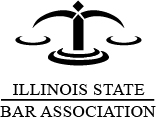Recent Blog Posts
Why Driver Fatigue Is Increasingly Likely to Lead to Truck Accidents
 Currently, the trucking industry in the United States is experiencing a critical shortage of truck drivers. Industry experts have reported that companies have been struggling to recruit new drivers for the past several years, and the COVID-19 pandemic has disrupted their ability to provide drivers with the proper training. At the same time, the need to ship cargo has increased since there has been a surge in e-commerce during the pandemic.
Currently, the trucking industry in the United States is experiencing a critical shortage of truck drivers. Industry experts have reported that companies have been struggling to recruit new drivers for the past several years, and the COVID-19 pandemic has disrupted their ability to provide drivers with the proper training. At the same time, the need to ship cargo has increased since there has been a surge in e-commerce during the pandemic.
These factors have combined to create a situation where fewer drivers are available to meet the increasing demand for shipping, which has made it more likely that drivers will be spending more time on the road. Because of this, truck drivers are more likely to push themselves beyond their limits, increasing the chances that they will be fatigued or drowsy while behind the wheel. This can lead to dangerous truck accidents, and in these cases, victims will need to work with an attorney to determine how they can hold a negligent truck driver and trucking company accountable for their injuries and damages.
How Can Meconium Aspiration Syndrome Affect a Newborn Infant?
 There are multiple ways that birth injuries can cause harm to both children and mothers. While some injuries are unavoidable, others occur due to medical malpractice. Meconium aspiration syndrome is one issue that can cause serious injuries to children, and if it is not addressed correctly, it can lead to ongoing health concerns or permanent disabilities. Parents of children who have been harmed by meconium aspiration will need to work with an attorney to determine how they can recover financial compensation for the harm done to their child and their family.
There are multiple ways that birth injuries can cause harm to both children and mothers. While some injuries are unavoidable, others occur due to medical malpractice. Meconium aspiration syndrome is one issue that can cause serious injuries to children, and if it is not addressed correctly, it can lead to ongoing health concerns or permanent disabilities. Parents of children who have been harmed by meconium aspiration will need to work with an attorney to determine how they can recover financial compensation for the harm done to their child and their family.
Effects of Meconium Aspiration Syndrome
The first stool that a child passes after being born consists of meconium, a thick, tar-like substance. In some cases, a child may pass meconium before being born, and it may become mixed in with the amniotic fluid in the mother’s uterus. This may occur because the child experiences fetal distress due to the use of Pitocin to induce labor, prolonged labor, or difficulty passing through the birth canal.
Signs of Nursing Home Abuse That Families Should Be Aware of
 For many elderly people, nursing homes provide the best solution to ensure that they will receive the medical care and assistance they need. When placing a loved one in a nursing home, a family should have the assurance that the person’s needs will be met and that they will be safe from harm. Unfortunately, some nursing homes do not live up to these expectations, and patients may suffer serious physical and emotional injuries because of abuse by staff members or other residents. Families who are concerned about the possibility of nursing home abuse will want to understand the signs that may indicate that their loved one has been the victim of these types of harmful behavior.
For many elderly people, nursing homes provide the best solution to ensure that they will receive the medical care and assistance they need. When placing a loved one in a nursing home, a family should have the assurance that the person’s needs will be met and that they will be safe from harm. Unfortunately, some nursing homes do not live up to these expectations, and patients may suffer serious physical and emotional injuries because of abuse by staff members or other residents. Families who are concerned about the possibility of nursing home abuse will want to understand the signs that may indicate that their loved one has been the victim of these types of harmful behavior.
Signs of Physical, Verbal, or Sexual Abuse
Physical abuse of nursing home residents can take many forms. Staff members may strike or shove a resident they believe is uncooperative or difficult or even restrain a resident to a bed or chair. Signs that a person has suffered physical abuse include serious injuries such as broken bones or brain trauma, as well as unexplained bruises, cuts, or scratches. Rope marks on a person’s wrists or ankles may indicate that they have been improperly restrained, or bedsores or hygiene issues may show that they have been confined to a bed or chair or restricted from moving about freely.
Surgical Errors May Involve Surgery at the Wrong Level of the Spine
 Patients who undergo surgery expect surgeons and other medical professionals who are involved in the procedure to take the proper care to protect their health and safety. Unfortunately, mistakes can occur during a surgical procedure that may cause a person to suffer additional harm on top of their existing medical conditions. In some cases, surgeons may perform procedures on the wrong part of a patient’s body. This is especially common in spinal procedures where surgery is performed at the wrong level of the spine. In these cases, patients may be able to hold a medical provider responsible for their negligence through a medical malpractice lawsuit.
Patients who undergo surgery expect surgeons and other medical professionals who are involved in the procedure to take the proper care to protect their health and safety. Unfortunately, mistakes can occur during a surgical procedure that may cause a person to suffer additional harm on top of their existing medical conditions. In some cases, surgeons may perform procedures on the wrong part of a patient’s body. This is especially common in spinal procedures where surgery is performed at the wrong level of the spine. In these cases, patients may be able to hold a medical provider responsible for their negligence through a medical malpractice lawsuit.
How Can Wrong-Level Spinal Surgery Errors Occur?
Studies have found that as many as half of all neurosurgeons have performed surgeries at the wrong level of the spine at some point in their careers. While it may seem unthinkable that a medical professional would accidentally operate on the wrong part of the body, these types of mistakes are more common in spinal surgeries. Wrong-level surgeries most often occur due to issues with intraoperative imaging or confusion about counting techniques used to identify the vertebrae where surgery should occur.
Who Is Liable if I Am Injured by Medical Malpractice After a Car Accident?
 Many personal injury cases are relatively straightforward. When a person or organization is directly responsible for someone else’s injuries, they may be held liable for the damages the victim has suffered. For example, a driver who is at fault in a car accident may be held responsible for the damages experienced by those who were injured in the crash, including the costs of medical treatment, the income they lost, the damage to their vehicle or other property, and their pain and suffering. However, additional factors can sometimes complicate these types of cases. What if a person was injured in a car accident, and when receiving treatment, they suffered further injuries due to medical malpractice? In these cases, victims will want to work with an attorney who can help them determine who was liable and hold those parties responsible for all of their damages.
Many personal injury cases are relatively straightforward. When a person or organization is directly responsible for someone else’s injuries, they may be held liable for the damages the victim has suffered. For example, a driver who is at fault in a car accident may be held responsible for the damages experienced by those who were injured in the crash, including the costs of medical treatment, the income they lost, the damage to their vehicle or other property, and their pain and suffering. However, additional factors can sometimes complicate these types of cases. What if a person was injured in a car accident, and when receiving treatment, they suffered further injuries due to medical malpractice? In these cases, victims will want to work with an attorney who can help them determine who was liable and hold those parties responsible for all of their damages.
What Are the Most Common Causes of Motorcycle Accidents?
 As warmer weather arrives in Illinois during the spring and summer, many motorcyclists are looking to hit the road. After spending most of the last year indoors due to the COVID-19 pandemic, cyclists will be glad to be back on the open road. However, many other drivers will also be spending more time on the road, which may increase the likelihood of dangerous motorcycle accidents. Cyclists who are injured in a collision will want to understand who was at fault and determine how they can pursue financial compensation for their injuries and damages.
As warmer weather arrives in Illinois during the spring and summer, many motorcyclists are looking to hit the road. After spending most of the last year indoors due to the COVID-19 pandemic, cyclists will be glad to be back on the open road. However, many other drivers will also be spending more time on the road, which may increase the likelihood of dangerous motorcycle accidents. Cyclists who are injured in a collision will want to understand who was at fault and determine how they can pursue financial compensation for their injuries and damages.
Driver Negligence Leading to Motorcycle Accidents
Motorcyclists are much more likely to be injured in a collision than people in passenger vehicles. While cars and trucks include seat belts, airbags, and other safety systems, motorcycles do not offer this type of protection, and a cyclist can suffer serious bodily harm or wrongful death in an impact with another vehicle. Most of the time, motorcycle accidents are caused by driver negligence, and this negligence may include:
What Steps Should Truck Drivers Take to Prevent Winter Truck Accidents?
 The winter is one of the most dangerous times of the year to be on the road. Winter weather can lead to snow and ice on the roadway, as well as reduced visibility, increasing the risk that drivers will lose control of their vehicles. Even in clear weather, low temperatures can lead to safety issues, such as “black ice” that may not be noticeable until it causes a vehicle to lose traction. These safety concerns can affect commercial trucks even more than other vehicles, since due to the large size and weight of tractor-trailer trucks, they require more time and distance to come to a stop, and winter weather conditions can cause a truck driver to lose control of their vehicle. To prevent truck accidents, drivers should be sure to follow the proper safety procedures during the winter.
The winter is one of the most dangerous times of the year to be on the road. Winter weather can lead to snow and ice on the roadway, as well as reduced visibility, increasing the risk that drivers will lose control of their vehicles. Even in clear weather, low temperatures can lead to safety issues, such as “black ice” that may not be noticeable until it causes a vehicle to lose traction. These safety concerns can affect commercial trucks even more than other vehicles, since due to the large size and weight of tractor-trailer trucks, they require more time and distance to come to a stop, and winter weather conditions can cause a truck driver to lose control of their vehicle. To prevent truck accidents, drivers should be sure to follow the proper safety procedures during the winter.
Commercial Truck Safety in the Winter
How Can Testing Errors Lead to a Breast Cancer Misdiagnosis?
 Breast cancer is the type of cancer that most commonly affects women. Fortunately, when breast cancer is detected in time, a person can receive the proper treatment, and there is a 91% survival rate within five years after breast cancer is diagnosed. However, if breast cancer is not diagnosed properly, a patient may not be able to receive treatment to prevent the spread of cancer, and they can suffer serious harm as a result. Failure to diagnose breast cancer may occur because doctors failed to order the proper tests or because test results were not interpreted correctly. In these cases, patients will want to work with a medical malpractice attorney to determine their options.
Breast cancer is the type of cancer that most commonly affects women. Fortunately, when breast cancer is detected in time, a person can receive the proper treatment, and there is a 91% survival rate within five years after breast cancer is diagnosed. However, if breast cancer is not diagnosed properly, a patient may not be able to receive treatment to prevent the spread of cancer, and they can suffer serious harm as a result. Failure to diagnose breast cancer may occur because doctors failed to order the proper tests or because test results were not interpreted correctly. In these cases, patients will want to work with a medical malpractice attorney to determine their options.
Diagnostic Mammograms and Targeted Breast Ultrasounds
Imaging tests are the methods that are most commonly used to detect breast cancer. Women routinely receive screening mammograms, which are used to look for signs of breast cancer in patients who do not have any symptoms. A diagnostic mammogram may be ordered based on the results of a screening mammogram or because a patient has experienced other symptoms indicating breast cancer, such as lumps or pain in the breast, changes in breast size or shape, or discharge from the nipple.
What Role Does Cooling Play in Infant Brain Injuries?
 Even though thousands of children are born every day, labor and delivery can be risky, and children can suffer birth injuries due to negligence by doctors, nurses, or other hospital staff. Brain injuries are some of the most serious types of birth injuries, and they can lead to cerebral palsy, cognitive impairments, loss of vision or hearing, and other permanent disabilities. In many cases, brain injuries are caused by a lack of oxygen during labor and delivery, and cooling is one form of treatment that can be effective in preventing further brain damage.
Even though thousands of children are born every day, labor and delivery can be risky, and children can suffer birth injuries due to negligence by doctors, nurses, or other hospital staff. Brain injuries are some of the most serious types of birth injuries, and they can lead to cerebral palsy, cognitive impairments, loss of vision or hearing, and other permanent disabilities. In many cases, brain injuries are caused by a lack of oxygen during labor and delivery, and cooling is one form of treatment that can be effective in preventing further brain damage.
How Is Cooling Used to Treat Birth Injuries?
There are a variety of issues that can occur during birth that may cut off the supply of oxygen to an infant. These include placental abruption, umbilical cord prolapse, uterine rupture, or any other conditions that affect the flow of blood and oxygen throughout the child’s body. Asphyxia during birth can cause a condition known as hypoxic ischemic encephalopathy (HIE). In these cases, a lack of oxygen to the brain can cause brain cells to die, and when blood flow resumes, toxins released by dead cells can cause additional brain damage, leading to a chain reaction that can cause extensive brain injuries or death.
The Importance of Electronic Fetal Monitoring in Preventing Birth Injuries
 During the process of labor and delivery, a child’s condition should be monitored closely, and medical personnel should respond quickly to any issues that could lead to birth injuries. Electronic fetal monitoring is often used to view and record an infant’s heart rate during labor, and doctors and nurses are trained to recognize the signs of fetal distress. If personnel do not properly interpret fetal heart rate tracings, or if they do not respond correctly to issues that could threaten the health of the child, this may be considered medical malpractice.
During the process of labor and delivery, a child’s condition should be monitored closely, and medical personnel should respond quickly to any issues that could lead to birth injuries. Electronic fetal monitoring is often used to view and record an infant’s heart rate during labor, and doctors and nurses are trained to recognize the signs of fetal distress. If personnel do not properly interpret fetal heart rate tracings, or if they do not respond correctly to issues that could threaten the health of the child, this may be considered medical malpractice.
Category II vs. Category III Fetal Heart Rate Tracings
When electronic fetal monitoring is used, fetal heart rate (FHR) tracings will typically fall into one of three categories. Category I tracings are considered normal, and they are usually a sign that labor can proceed without risks or complications. Category II or III tracings, however, may indicate that a child is experiencing distress, and action may need to be taken to protect the child’s safety or ensure that delivery can be completed while minimizing the risk of injury.





 312-236-6324
312-236-6324




 312-236-6324
312-236-6324 312-236-6426
312-236-6426


